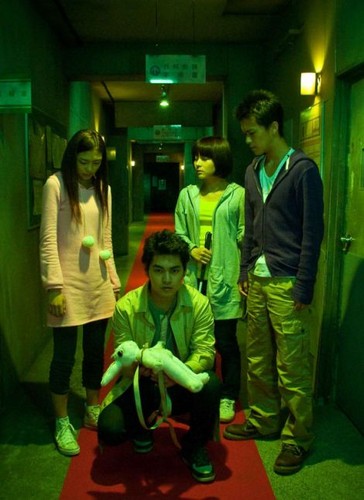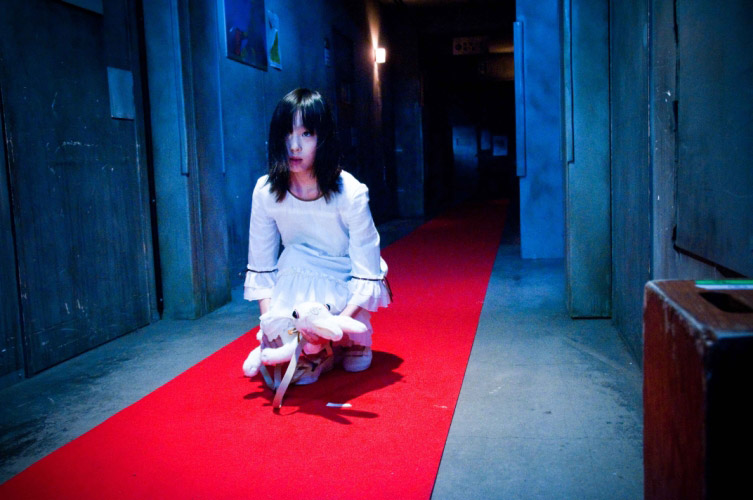Southeast Asian horror films tend to focus on the supernatural realm, with films dealing with ghosts and hauntings (Shutter, Ghost of Mae Nak). This focus on the more supernatural realm of horror films can be attributed to the highly spiritual nature of Southeast Asian society; in many parts of Southeast Asia, such as Thailand and Indonesia, the realm of ghosts and spirits is intricately linked with the mundane realm of the real world.
Japanese horror films, on the other hand, are the most eccentric and original of all Asian horror films, as they frequently delve into the realm of the surreal and the absurd. This may be attributed to the very strict and disciplined nature of Japanese society, in which life is based on a series of orderly and long-engrained traditions of rules and rituals. Thus, the arts are a means of escaping from the rigid confines of Japanese society, and into a liberating realm of free-flowing creativity and taboo breaking, sometimes shocking displays of defiance.
The 2009 Japanese horror film The Shock Labyrinth is a perfect example of this rebellious, surreal aspect of Japanese arts. Directed by the prolific and successful Takashi Shimizu, best known for the Ju-on series of horror films, The Shock Labyrinth is a bold and chilling film. The Shock Labyrinth is reminiscent of the cult classic Japanese film Hausu, which was re-released by The Criterion Collection in 2010. Like Hausu, The Shock Labyrinth is a genre bending film that takes the horror film trope about a group of youth who find themselves in a haunted house, and elevates it to a surreal and outrageous level.
The Shock Labyrinth begins with a group of young friends who mysteriously encounter Yuki, a long lost friend who they thought had been dead for a long time. As the friends begin to question the true identity of Yuki, and some start to question their own sanity, Yuki has an accident, and they are forced to drive her to a hospital. The only hospital they find turns out to be deserted, and as they explore the hospital, dark, hidden secrets from the friends’ childhood start to emerge.
Like the Overlook Hotel in Stanley Kubrick’s The Shining, the hospital in The Shock Labyrinth starts to take on an identity by itself, as it taps into the subconscious of each of the friends to dig up repressed memories of a tragic event that occurred in their collective childhood experience. As the title implies, the narrative of The Shock Labyrinth becomes labyrinthian in nature, as it weaves back and forth between violent and haunting memories of each of the main characters. The dark and frightening rooms and tunnels in the hospital become direct reflections of the primal fears of each character, and as the true identity of Yuki gradually reveals itself, the characters one by one descend into madness.
Shimizu does a great job of throwing the audience into emotional turmoil, as his narrative gradually fragments into seemingly disconnected scenes of disturbing violence and bloodshed. Upon repeated viewings, the fragmentary scenes of the narrative gradually reveal themselves to be intricately connected, like a giant puzzle which can only be solved by the more patient and discerning players. What Shimizu is doing is cinematically portraying the true nature of a nightmare—how the seemingly random nature of our dreaming world has its own internal logic, one based upon the deeper matrix of the collective subconscious.
By gradually revealing more and more about the mystery of Yuki, Shimizu is also revealing the true nature of repressed memories. Oftentimes when a traumatic event occurs, our mind tends to repress memories of this event. These memories only come out when we are presented with a triggering mechanism to conjure them up. The triggering mechanism in The Shock Labyrinth is the hospital itself, which becomes a living, breathing monster that threatens to swallow up all of the main characters.
The Shock Labyrinth is a brilliant and frightening film that takes us on a wild ride into the realm of nightmares. Its narrative structure is psychologically sophisticated, and by the end of the film, the viewer is stuck in the deepest, darkest realms of the character’s horrific memories.





No comments:
Post a Comment